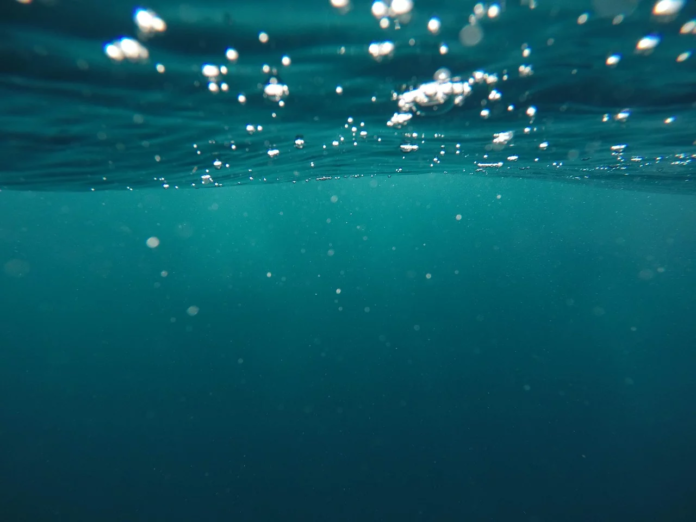Source: Department of Conservation
Climate change effects are considered the top threats to marine ecosystems according to a 2012 study. The likely impacts from climate change on some of our marine species and ecosystems are relatively easy to predict and understand, but others require a bit more investigation. Some of the processes that will change the ocean dynamics include increased sea-surface temperature, sea level rise, ocean acidification, and extreme weather events (heat waves, storms etc). These effects will disrupt ocean currents, food webs, species distribution, and intertidal habitats.
The Ministry for the Environment is the central government lead for climate change mitigation and adaptation but we (DOC) have an important role to play for our protected and threatened species and marine protected areas.
DOC Marine Climate Change Project Team
Our marine climate change project team (MCCT) was formed in early 2019, with staff from the Mountains to Sea, Marine Species, and Marine Ecosystems teams. The purpose of the team is to enable the Aquatic Unit to prioritise, support action and report on work relating to marine climate change mitigation and adaptation.
We are working to increase the resilience of native species & ecosystems so they have a better chance to adapt to climate change. As well as working on adaptation solutions we are focusing effort on marine mitigation opportunities.
We are also contributing to the creation of a DOC Climate Change Adaptation Action Plan which will set out actions we can take to reduce the impacts of climate change across all aspects of our business.
Below are some examples of areas of work we are focusing on.
Coastal wetlands and blue carbon
There is a lot of focus on ‘One Billion Trees’, but we are keen to add marine opportunities into the toolbox. Marine ecosystems are a great opportunity for mitigation! This so called “blue carbon” may be a new idea for New Zealand but the concept already has much traction overseas and in some countries, people are getting paid to grow coastal wetlands! Salty wetlands can store 10-40 times more carbon, per unit area, compared with terrestrial forests.
This project supports the restoration of coastal wetlands (one rich form of blue carbon) as a tool for carbon sequestration to help mitigate climate change.
Coastal adaptation for nature
Many of our coastal marine ecosystems are at risk from sea level rise induced “coastal squeeze”: shallow surf zones, dunes, intertidal areas of open beaches and estuaries, coastal wetlands, coastal sequences.
How should we be managing our coasts against sea level rise and increased storm events? Seawalls and hard structures, or a managed retreat? What can we do to help our coastal species adapt – particularly those that rely on our shorelines for rest, reproduction, and feeding, e.g. New Zealand sea lions, yellow-eyed penguins/hoiho.
Mangroves (and other coastal plants) are important to protect our shorelines from extreme tides, sea level rise, and tsunamis. They are a form of coastal adaptation and protection.
Seabirds
Seabirds are a key indicator of the impact of climate change, as they are an apex predator that traverse the world’s oceans.
Seabirds rely on both the land and the sea throughout their lives and will therefore be affected by both land-based and sea-based risks. There will be some direct measures we can take to help seabirds at their breeding colonies adapt to increased storm frequency, sea level rise, and predator eruptions. Indirect effects on food webs at sea will be harder to manage.
The challenge will be prioritising the species or populations most at risk.
Some adaptation projects have been identified that we could focus on e.g. coastal nesting gulls and terns, protection of surface nesting seabirds from extreme heat events, and identification of future risks to seabirds from climate change.
Marine mammals
Did you know a single great whale is worth at least 2 million dollars? Each great whale (baleen whales and sperm whales) is equivalent to a forest with 400,000 trees when it comes to carbon storage! Worldwide, this “whale pump” transfers about 10 gigatonnes of carbon from the atmosphere to the deep ocean each year. Even more reason why we should protect our whales – they can help us fight climate change (see this podcast for more info on the value of whales).
A focus of our action to help make dolphins and whales, and seabirds, resilient to climate change will be reducing other stressors that we have control over. Seals will also face similar land-based threats as nesting seabirds and could benefit from more direct action.
It is going to be important to review current knowledge, and to learn from other countries, on the possible impacts of climate change on New Zealand’s threated, and protected marine species. In particular, when it comes to distribution and migration patterns so we know where to focus our management for future scenarios.
Marine protected areas (MPAs)
Establishing MPA networks is critical to maintaining the resilience of our marine ecosystems to climate change and other pressures. MPAs can be used to protect climate change refugia and critical habitats for climate change affected species. We can also use MPAs as monitoring and research sites to help track the effects of climate change and distinguish climate change or environmental variability from the effects of human activities.
We are interested in how climate change can be better considered in marine protection planning and also what modifications we can make to our marine monitoring programmes to incorporate climate change.
Where to next
We wish to understand what we can do to help our ecosystems and species adapt to climate change but keeping a focus on mitigation is also crucial as the window for us to keep warming to under 1.5oC is rapidly closing.
Happy Seaweek! If you would like to participate in some of the activities happening across the country – check out what’s on in your region.



